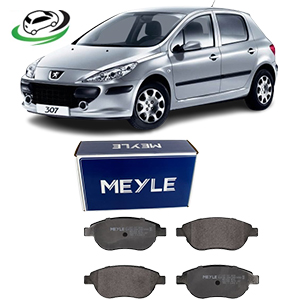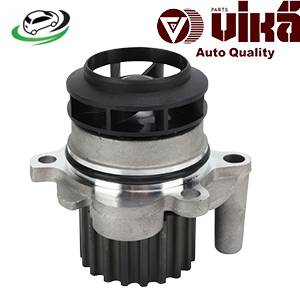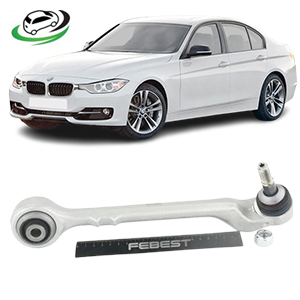-6%
Get BMW 3 F30 2011-2015 Front Lower Arm Assy RH 1924-F30FLRR
The front lower arm assembly RH (right-hand side) is a critical component of a vehicle’s suspension system. Also known as the lower control arm, it connects the chassis to the steering knuckle, playing a pivotal role in maintaining stability, handling, and overall ride quality. This guide will provide an in-depth look at the design, function, types, symptoms of wear, and maintenance of the front lower arm assembly, particularly focusing on the right-hand side (RH).
Structure of the Front Lower Arm Assembly
The front lower arm assembly RH consists of several key components that work together to maintain suspension geometry and vehicle stability:
- Arm Body: The main body of the lower arm is typically made from steel, aluminum, or forged iron. It is designed to be robust and durable enough to withstand the forces of driving while maintaining flexibility for movement. The arm body forms the core structure that connects other suspension components.
- Bushings: Rubber or polyurethane bushings are inserted at the pivot points of the control arm to absorb shocks and vibrations. These bushings also allow limited movement, ensuring smooth articulation as the vehicle drives over uneven surfaces.
- Ball Joint: At the end of the lower arm assembly, a ball joint connects the control arm to the steering knuckle. This joint allows for the rotational movement necessary for steering, while also keeping the wheels aligned with the chassis. The ball joint moves in multiple directions to accommodate suspension movement and steering inputs.
- Mounting Brackets: The lower arm assembly features mounting points where it is attached to the vehicle’s subframe or chassis. These brackets help secure the arm in place while still allowing for controlled movement as the suspension compresses and rebounds.
- Sway Bar Link (Optional): Some lower control arms are connected to the vehicle’s sway bar (anti-roll bar) through a link. This link helps reduce body roll during cornering by distributing forces between the wheels.
Function of the Front Lower Arm Assembly RH
The front lower arm assembly performs several vital functions within the suspension system:
- Suspension Geometry Control: The primary function of the lower arm is to help maintain the suspension geometry, ensuring that the wheels remain aligned with the vehicle’s frame during movement. This helps maintain stability and handling, allowing for safe and predictable driving.
- Wheel Articulation: The lower arm allows the wheels to move up and down independently of the chassis, which is crucial for absorbing shocks and vibrations from the road. This motion is especially important when the vehicle encounters uneven terrain or potholes, as it allows for smooth, controlled movement.
- Support for Steering Movement: The ball joint at the end of the lower arm connects to the steering knuckle, which is responsible for turning the wheels. This joint allows the wheels to rotate for steering while keeping the wheels aligned with the suspension.
- Shock Absorption: The bushings in the lower arm absorb minor vibrations and shocks that the suspension experiences during normal driving. These bushings help dampen the impact of road imperfections, ensuring a smoother ride.
- Stabilization: In conjunction with the upper control arm (if present) and other suspension components, the lower arm helps stabilize the vehicle during acceleration, braking, and cornering. It ensures that the tires remain in contact with the road, optimizing traction and reducing wear.
Types of Front Lower Arm Assemblies
The design and material of the front lower arm assembly can vary based on the vehicle’s design and performance needs:
- Stamped Steel Control Arms: These are the most common type of lower arm assemblies, typically found in mass-produced vehicles. Stamped steel arms are cost-effective, strong, and durable. They are ideal for everyday driving conditions but may not be suitable for high-performance applications.
- Cast Iron Control Arms: These control arms are heavier and more robust than stamped steel arms, often used in trucks and SUVs that need extra durability for off-road conditions or heavy loads. Cast iron arms offer excellent strength but may increase the vehicle’s unsprung weight, which can affect handling.
- Aluminum Control Arms: Many modern vehicles, especially performance cars, use aluminum control arms. These arms are lightweight and offer excellent strength-to-weight ratios. The reduced weight helps improve handling, braking, and fuel efficiency, although aluminum control arms can be more expensive than their steel or cast-iron counterparts.
- Tubular Control Arms: These are often used in high-performance or aftermarket applications. Tubular control arms are made from hollow steel or aluminum tubing, which provides a lighter yet stronger structure compared to traditional stamped steel. They are often adjustable, allowing for fine-tuning of suspension geometry in racing or performance vehicles.
Importance of the Front Lower Arm Assembly RH
The front lower arm assembly is crucial for vehicle performance and safety:
- Stability and Handling: A properly functioning lower arm assembly ensures that the wheels remain in alignment with the vehicle’s chassis, providing stability and predictable handling. This is especially important during high-speed driving, sharp turns, or when navigating uneven surfaces.
- Comfort: The lower arm assembly helps smooth out the ride by absorbing shocks and vibrations from the road. Without a properly functioning lower arm, the vehicle would experience excessive bouncing and jolting, making for an uncomfortable ride.
- Safety: The lower arm assembly plays a key role in maintaining the vehicle’s suspension and steering systems. A failure in this component could result in loss of control, particularly during cornering or braking, making it a critical safety feature.
- Tire Wear: Proper alignment and movement of the wheels help reduce uneven tire wear. When the lower arm assembly is functioning properly, it ensures that the tires remain in consistent contact with the road, extending the life of the tires and reducing maintenance costs.
Common Issues and Symptoms of Wear
Over time, the front lower arm assembly can experience wear and tear due to regular driving conditions. Here are some common symptoms of a failing lower arm assembly:
- Clunking or Banging Noises: If the bushings or ball joint in the lower arm assembly are worn out, you may hear clunking or banging noises when driving over bumps or uneven surfaces. These noises are often most noticeable when accelerating or decelerating.
- Vibration in the Steering Wheel: A failing lower arm can cause vibrations to be felt in the steering wheel, particularly at higher speeds or when turning. This is often a sign of worn bushings or a loose ball joint.
- Uneven Tire Wear: If the lower arm assembly is not maintaining proper wheel alignment, you may notice uneven tire wear. This can result in the tires wearing out faster on one side than the other.
- Steering Instability: If the ball joint or bushings in the lower arm assembly are worn, the vehicle may feel unstable or “loose” when steering. You may notice that the vehicle drifts to one side or feels less responsive when turning.
- Excessive Swaying or Body Roll: A damaged lower arm can lead to excessive swaying or body roll during cornering, as the suspension may not be able to properly stabilize the vehicle.
- Visual Damage: Upon inspection, you may notice cracks, tears, or wear in the bushings, or rust and corrosion on the control arm itself. Any visible damage is a clear sign that the lower arm assembly needs to be replaced.
Maintenance and Replacement of the Front Lower Arm Assembly RH
Maintaining the front lower arm assembly is essential for ensuring vehicle safety and performance:
- Regular Inspections: The lower arm assembly should be inspected regularly, especially during routine maintenance like oil changes or tire rotations. Mechanics typically check for signs of wear, damage, or looseness in the bushings and ball joints.
- Bushing Replacement: The bushings in the lower arm can wear out over time, leading to increased noise, vibrations, and decreased handling performance. Replacing worn bushings is a relatively simple and cost-effective way to extend the life of the lower arm assembly.
- Ball Joint Replacement: Worn or damaged ball joints should be replaced immediately to prevent steering and handling issues. In some cases, the ball joint may be a separate component that can be replaced individually, while in others, it may be integrated into the control arm, requiring the entire assembly to be replaced.
- Complete Arm Replacement: If the lower arm assembly is bent, cracked, or severely worn, it will need to be replaced. Replacement arms are available as OEM parts or aftermarket options, depending on the vehicle and the driver’s needs.
- Alignment: After replacing the lower arm assembly, it’s essential to have the vehicle’s alignment checked and adjusted if necessary. Proper alignment ensures that the vehicle handles correctly and that the tires wear evenly.
Conclusion
The front lower arm assembly RH is a critical component of a vehicle’s suspension system, playing a vital role in maintaining stability, handling, and ride comfort. Understanding its structure, function, and importance allows drivers to maintain their vehicles effectively and avoid potential safety hazards. Regular inspections, timely maintenance, and the replacement of worn parts ensure that the lower arm assembly continues to perform its essential functions, keeping the vehicle safe and comfortable on the road.
Follow us on Facebook for more parts.



